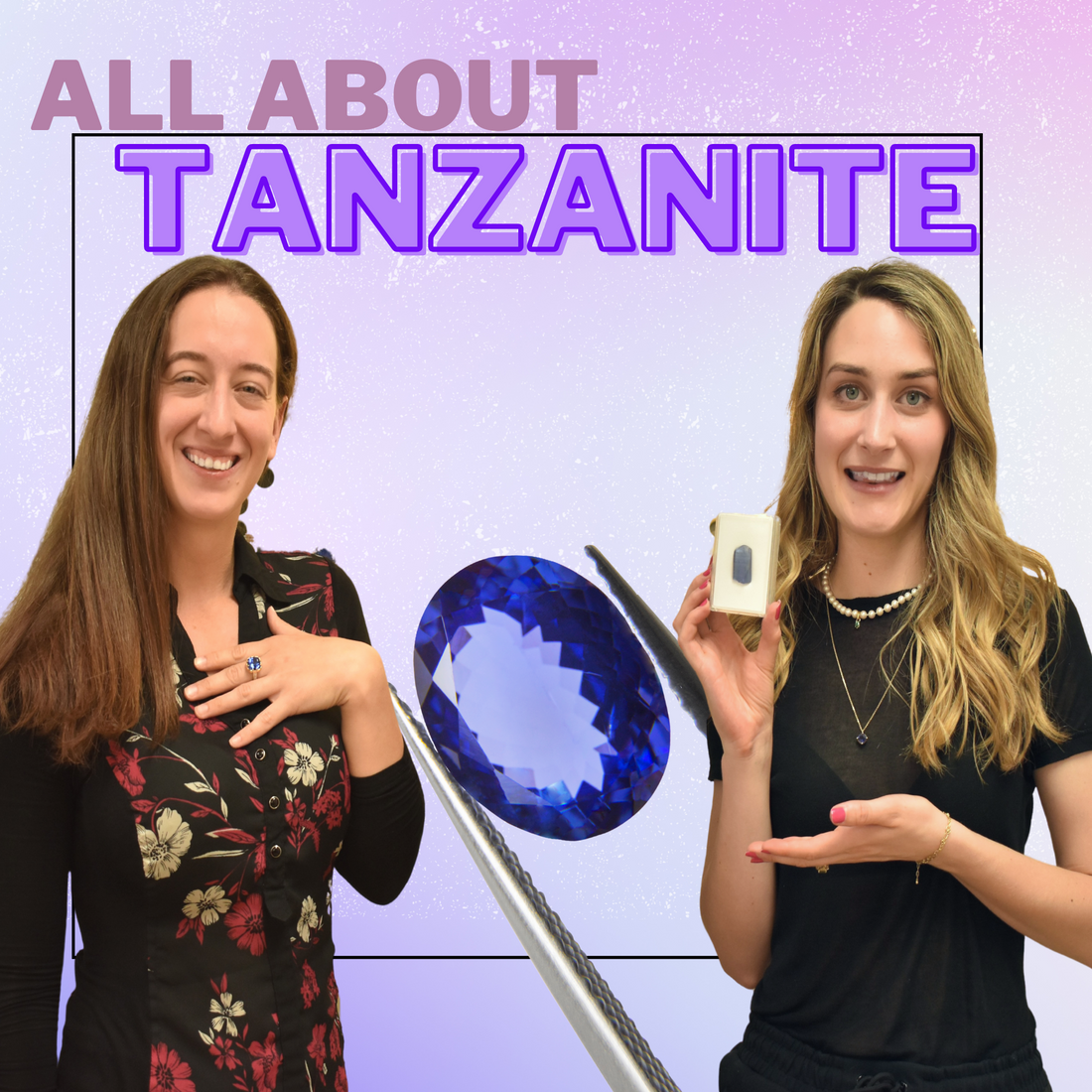Tanzanite Stone: Price, Quality, Mining & Investing
Shop from our curated gemstone collection here
Today we will be covering everything you need to know about Tanzanite's. From color, price range, origins, imitations, and optical phenomenon's that most people are not aware of. We’re excited to share our knowledge and encourage customers to consider Tanzanite’s as a viable option for their jewelry!
If you are looking to source a Tanzanite make sure to contact us at info@fineandflux.com and we will be happy to go through selection process with you! We also create personalized jewelry if you are interested in customizing your own tanzanite piece of jewelry. Our ready to order pieces can also customized to your liking with your preferred stone.
What is a Tanzanite?
This gemstone was originally named by Tiffany & Co. when the stone was initially discovered in 1967 in Tanzania near Kilimanjaro. It has a hardness of 6.5, which is not ideal since we often look for 7 or above for rings. However, it is still durable enough if you are a little more careful with it. Perhaps it’s a ring that you save for special occasions rather than every day.
Naturally, when Tanzanites come out of the earth they are brown in color. It is said that a fire occurred near the Kilimanjaro that naturally heated the stone to its blue color. That is one of the reasons Tanzanites were not discovered before that, because they were a diesel color. However, when it is heated, even at low temperatures, it becomes a radiant blue-purple color.
Treatments:
96% of Tanzanites are heat-treated and around 4% are naturally blue and therefore do not need any treatment. That substantially increases the price of a stone. However, today, we are yet to find a way of proving if a Tanzanite is heated or not, which is why clients are to always assume their stones are heated.
Prices:
For a commercial quality Tanzanite, the starting price will probably be around $200 per carat. For a medium quality stone, the price will increase to $400-$500 per carat. A high quality Tanzanite can easily go for $1000 per carat.
Although Tanzanites are 1000 times rarer than diamonds, they still have a much lower price point. That is because they are not as well-known and therefore not as in demand. Additionally, it is a softer stone and although the chances of breaking it are not that high, it is a possibility.
Since there is only one mine in the world that produces this stone, many people expected it to run out and for the prices to skyrocket, however, there is no sign of depletion in the foreseeable future and therefore we do not recommend purchasing Tanzanite as an investment stone.
Pleochroism:
The reason we say to Tanzanites have Pleochroism rather than color change or color shift is because its colors differ depending on the direction you are looking at the stone rather than the light. Tanzanites are actually one of the very few gemstones that are trichroic when unheated. You can see magenta, yellow, or green. When heated however, they become dichroic, meaning it loses an additional color when heated. Although, very rarely, they can sometimes remain trichroic, which will be one of the only ways of seeing if a stone is not heated (however it still may not be a guarantee).
How to buy a Tanzanite:
Color: the most sought after Tanzanites are usually deep purple-blue or a deep blue in color. They are extremely vibrant compared to many other blue stones. Avoid getting one that is too dark or too light.
Cut: The cut of your stone affects the overall look greatly. Therefore, make sure your stone is not too deep and not too shallow, so it shines just right!
Clarity: Again, like with most stones, you need to make sure your stone is as clear as possible. Avoid cloudiness within the stone that will affect light shining through the stone. Additionally, cracks within the stone affect its durability and heighten the likelihood of a stone breaking.
Imitations:
Iolite: This is a natural stone that is purple with a side of grey. It also happens to be pleochroic and dichroic like heated Tanzanites. It varies from deep purple to light purple. It is not expensive and therefore is an alternative to Tanzanite.
Natural Sapphires: Often times Sapphires and Tanzanites get mistaken for one another. Obviously, Sapphires are more valuable than Tanzanites, however, sometimes low-quality Sapphires are used to imitate higher quality Tanzanites. Synthetic Sapphires are also used for imitations.
December Gemstone:
The purple-blue stone is a December gemstone, and it symbolizes new beginnings. It also represents higher consciousness, intuition, and perception. Some even believe it helps detoxify the body!
How to take care of your Tanzanite?
As previously stated, Tanzanites are more fragile than other stones like Diamonds and Emeralds, therefore you do have to be more careful with it. Another important note is to keep it away from heat. Slight heat can change the color of your stone and extreme heat can destroy it.
Make sure to stay away from ultrasonic, steam cleaner, and be careful with jewelry cleaners that use chemicals. We recommend using soap, water and a toothbrush.
If you are looking to source a Tanzanite make sure to contact us at info@fineandflux.com and we will be happy to go through selection process with you! We also create personalized jewelry if you are interested in customizing your own tanzanite piece of jewelry. Our ready to order pieces can also customized to your liking with your preferred stone.




